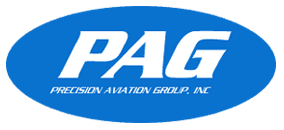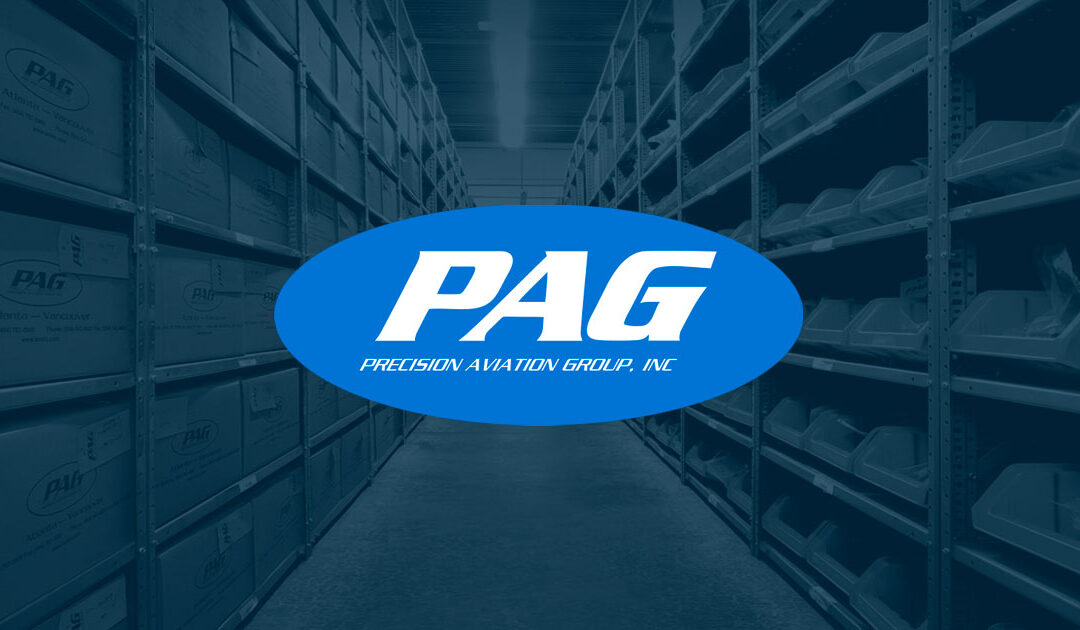Challenges and Strategies for Aerospace Directors of Maintenance (DOMs)



The weight of ensuring a fleet of aircraft is flight-ready and on schedule lands squarely on the shoulders of the Director of Maintenance (DOM). Not only are they responsible for keeping aircraft properly maintained, but it’s also the DOM’s job to ensure compliance with all required aviation regulations, all while minimizing downtime and maintaining cost-efficiency.
Managing the maintenance, repair, and overhaul (MRO) of avionics, components, engines, and safety equipment should be a straightforward operation. However, the availability of the spare parts required for safe takeoffs, flights, and landings depends heavily on access to a reliable MRO supply chain.
In today’s global supply environment, MRO supply chain management has become a critical differentiator in operational efficiency. Aviation businesses that master this area gain a competitive advantage — those that don’t risk costly delays, grounded assets, and compliance setbacks.

COSTS & BUDGETS
Compliant MRO parts are generally less expensive than brand-new OEM parts, helping DOMs meet strict maintenance budgets and hedge against volatile price fluctuations. However, relying on reactive part sourcing or third-party resellers can lead to inconsistent quality, longer lead times, and limited availability — a model that hampers the bottom line and weakens overall MRO management.
Without clear inventory optimization strategies, maintenance professionals often face inflated costs due to emergency procurement and delayed MRO operations.
PAG’s trademarked Inventory Supported MRO (ISMRO®) program addresses these ongoing challenges head-on. By offering a proactive supply chain model with strategic sourcing and dedicated inventory, PAG allows clients to reduce dependency on just-in-time procurement while increasing operational stability.
STRATEGIES
- Use trusted MRO providers like PAG, who maintain extensive MRO inventory and global maintenance capabilities.
- Leverage MRO supply partners with proven experience in inventory management and supply chain efficiency to reduce total cost of ownership.
- Plan ahead using demand forecasting and historical data to avoid costly emergency sourcing.
DISRUPTIONS & DELAYS
Supply chain disruptions are no longer rare — they’re an ongoing challenge. Global events such as pandemics, geopolitical tensions, raw materials shortages, and extreme weather regularly impact supply chain operations across the aviation industry.
Even minor MRO supply chain disruptions can cause significant ripple effects. A delay in one critical component could ground a revenue-generating aircraft, extend turnaround times, and reduce fleet availability.
When it comes to MRO procurement, the ability to maintain parts availability and mitigate risk is paramount.
STRATEGIES
- Work with PAG to incorporate predictive maintenance technologies and real-time analytics that identify upcoming repair needs and prevent unscheduled maintenance.
- Rely on PAG’s warehousing model, which includes buffer stock for MRO items with long lead times or volatile supply conditions.
- Strengthen supplier relationships and supplier performance monitoring to identify vulnerabilities early.
PAG Parts Distribution
Helping customers stay in the air today,
and ahead of the curve tomorrow…
DATA VISIBILITY & OBSOLECENSE
A lack of transparency in MRO inventory and repair status is a common frustration among DOMs. When maintenance teams don’t have access to real-time data on part location, condition, or shipment ETA, costly inefficiencies and downtime are unavoidable.
As aircraft age, the MRO industry faces additional pressure with the obsolescence of systems and components. As parts become outdated, it’s more difficult — and expensive — to source or manufacture compliant replacements. This creates long-term strain on the MRO supply chain, forcing operators to choose between higher costs or prolonged maintenance delays.
STRATEGIES
- Partner with PAG to access one of the most diverse spare parts inventories in the aviation industry, supported by worldwide facilities and digital solutions for transparent tracking.
- Adopt digital supply chain management platforms that deliver accurate, real-time visibility into MRO operations.
- Utilize PAG’s network to source alternative solutions for obsolete or discontinued components while pursuing permanent upgrades.
REGULATION COMPLIANCE
The aviation industry is governed by stringent regulations that evolve rapidly. From FAA mandates to EASA standards, maintaining up-to-date documentation and compliance certifications is critical for ongoing operations.
Delays in certification or audit readiness can halt MRO operations, impact flight schedules, and potentially put safety at risk. Ensuring that all materials, tools, and procedures meet current regulatory standards is a fundamental part of effective supply chain management.
STRATEGIES
- Contact PAG to learn more about their industry-standard quality control processes, which ensure every part and repair meets compliance expectations.
- Use PAG’s expertise in audit preparation, certification, and documentation to reduce downtime and improve readiness.
- Maintain communication with authorities to track policy changes and prevent disruptions to MRO operations.
WORKFORCE GAPS
Despite advancements in technology, the MRO industry continues to face a skilled labor shortage. Many organizations struggle to hire and retain qualified technicians, engineers, and support staff for maintenance programs. This issue is further compounded by new digital platforms and evolving systems that require ongoing technical training.
The result is longer turnaround times, reduced throughput, and greater reliance on external suppliers.
STRATEGIES
- Collaborate with OEMs and MRO providers like PAG to develop technician training programs that elevate internal team capabilities.
- Explore partnerships with local aviation schools and colleges to offer facility tours, internships, and early career exposure to MRO operations.
- Supplement internal workforce gaps with trusted third-party MRO supply partners who can deliver support on demand.

The Bigger Picture: How MRO Supply Chain Management Impacts the Bottom Line
For aviation operators and business leaders, managing the MRO supply chain isn’t just about parts availability — it’s about protecting uptime, improving cash flow, and reducing total cost of operations. As fleet demands rise and aircraft technology becomes more complex, supply chain efficiency is increasingly linked to success.
A connected, transparent, and proactive approach to MRO supply chain management enables:
- Access to the right part at the right time
- Mitigated risk from supply chain disruptions
- Improved decision-making via historical data
- Reduced costs through strategic inventory optimization
- Strengthened supplier collaboration and performance tracking
- More agility in responding to unplanned repairs or upgrades
In a world where availability and responsiveness define success, a robust MRO supply chain gives operators the flexibility and readiness they need to stay competitive.
Your MRO Solution
DOMs around the globe rely on PAG for tip-to-tail MRO support and logistics, backed by an infrastructure built to scale with their needs.
What you get with PAG:
140,000+ Repairs Performed Annually
- 25 Repair Stations Worldwide
- $240M+ Flight-Ready Parts Inventory
- 110+ Authorized OEM Product Lines
Call us: +1 800.537.2778
| Avionics MRO Services, Sales, Repairs, Exchanges | Cockpit Panels, System Upgrades, Aftermarket Engineering & Installations | Eco-Friendly Coatings & Slurries for Direct Application or Distribution | 200,000+ Flight-Ready Parts for Immediate Customer Access Worldwide | Comprehensive Fixed- and Rotor-Wing MRO Services | Standardized Processes, Documentation, & Quality Management | Spares Inventory Consignment |



